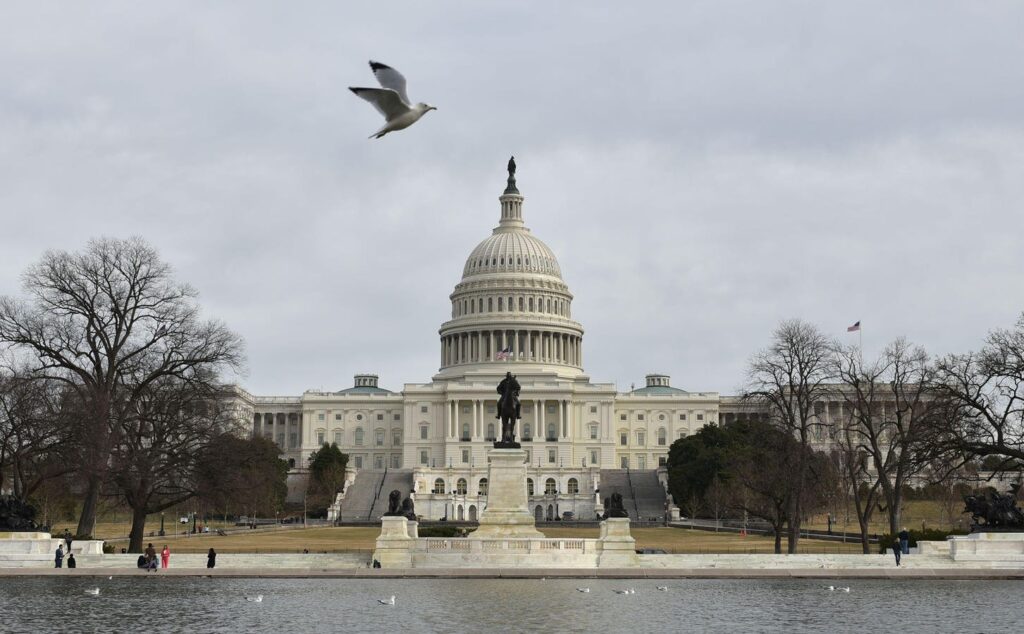Before the Memorial Day recess, the Senate cleared several procedural hurdles to move closer to passing legislation that would establish a regulatory framework for stablecoins in the U.S. The measure has come to have significant bipartisan support in the upper chamber, with 18 Democrats having voted in favor of it. There remains notable opposition from Democratic leaders in the Senate, including Senate Minority Leader Chuck Schumer (D-N.Y.) and Senate Banking, Housing, and Urban Affairs Committee Ranking Member Elizabeth Warren (D-Mass.). Still, the bill appears to be on a path to final passage after lawmakers return from their Memorial Day recess.
Before final passage, several changes are anticipated to be made, according to Bloomberg. These expected revisions include prohibiting paying interest to stablecoin holders, clarifying the lack of Federal Deposit Insurance Corporation coverage, toughening regulations on foreign stablecoin issuers, and making it more difficult for “non-financial publicly traded companies” to issue stablecoins. The text of these changes, which are expected to be part of the manager’s amendment, has yet to be made public.
These tweaks were agreed to as part of the negotiations between the two parties and were critical in securing Democratic support of the bill. The measure previously failed to pass a procedural hurdle due to insufficient Democratic support. Still, Warren’s Senate Banking, Housing, and Urban Affairs Committee staff released a memo attacking the changes as insufficient.
While these adjustments to the stablecoin legislation’s provisions are not expected to jeopardize support for the bill, Senate Majority Leader John Thune’s (R-Wyo.) plans for a more open amendment process on the Senate floor have created concern about unrelated amendments being included that could endanger support. The measure that has received the most attention is the Credit Card Competition Act, which aims to address credit card swipe fees. The bill has been divisive among lawmakers for years, and some senators have suggested that if it were included, they would consider voting against the entire bill. This danger has brought the cryptocurrency industry into lobbying against the amendment receiving a vote, as documented by Semafor.
While the exact likelihood of the measure’s inclusion is difficult to assess, even if it were attached to the Senate bill, the CCCA would likely be removed in the House and not make the final bill. However, if it were to get attached successfully, it could create serious complications in getting the stablecoin legislation out of the Senate.
With the Senate likely to clear its stablecoin legislation in early June, the focus will shift to the House. Its draft cleared the House Financial Services Committee but is still awaiting a vote on the House floor. What is uncertain is whether the House will elect to adopt the Senate’s measure or pass its own version, then requiring the two chambers to reconcile their differences. The bills continue to have some differences, with one significant one being on the role of state regulators. In the Senate bill, there is a $10 billion threshold above which stablecoin issuers would be federally regulated. The House bill does not contain a similar provision.
The other open question that will affect the timing of passage for the bill is whether lawmakers will look to combine the stablecoin bill with the market structure proposal. This measure has not made as much progress in either chamber, particularly the Senate, and could take several more months to be finalized. Whether to combine the two has divided leaders in both chambers before and could be a sticking point in any effort to reconcile the House’s and Senate’s stablecoin drafts, as reported by Politico. The longer the process of passing the stablecoin legislation, the better the chances will be that it could be combined with the market structure bill.
If the stablecoin legislation is to move forward on its own, it could see passage by the end of July, if not sooner, depending on the extent of differences that need to be resolved between the version passed by the House and that passed by the Senate. What could force this timing to slip is the budget reconciliation measure that recently passed in the House. The bill will likely occupy much of the Senate’s time in June and then have both chambers working to reconcile the differences in their drafts during July. Even in this case, there is a strong likelihood that the stablecoin legislation will pass early in the fall, but it could get held up as the delay will create more of an opening for the market structure measure to get attached.
Read the full article here
